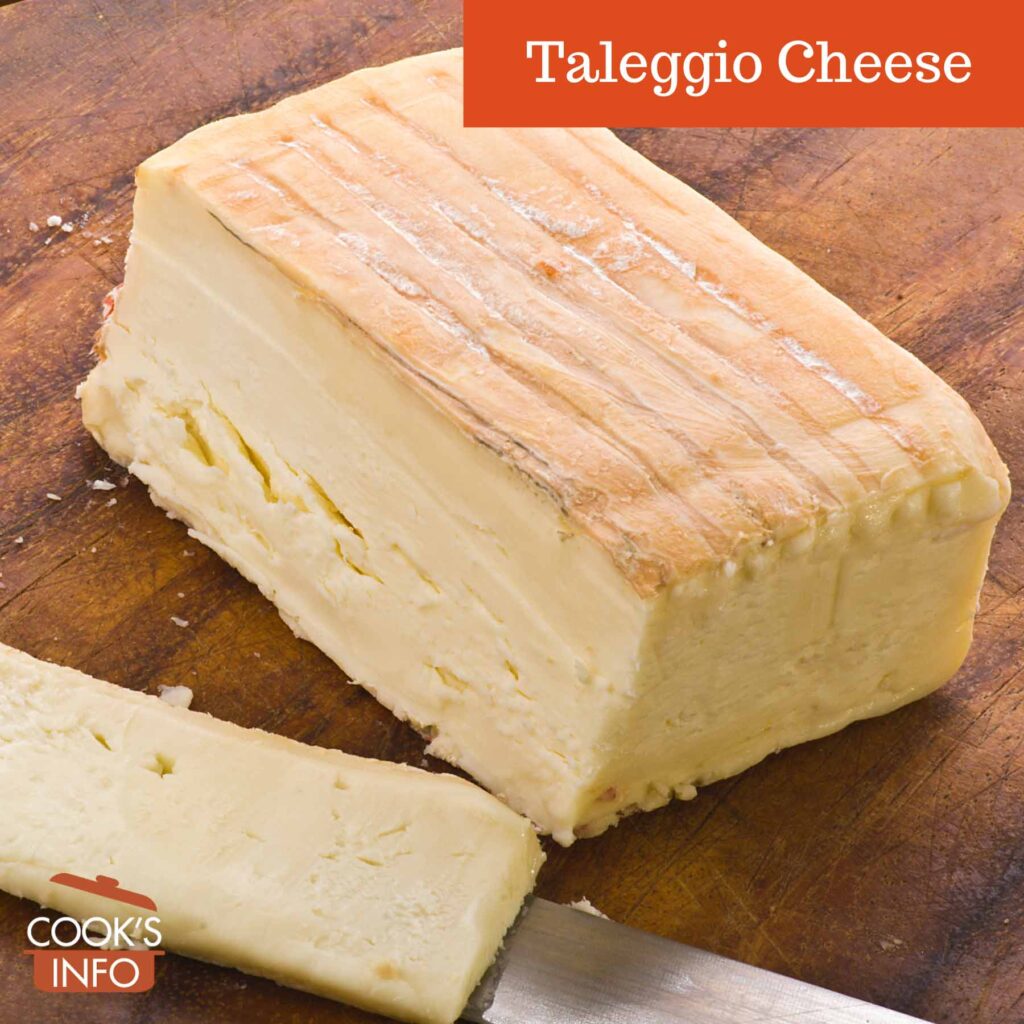Taleggio Cheese is made in the Lombardy region of Italy, and in Val Taleggio in the Italian Alps, north of Bergamo.
The cheeses are stamped with the Taleggio trademark.
This is an EU PDO protected cheese.
Physical characteristics
The taste of the cheese ranges from mild to sharp, depending on how long it has been aged. When the cheese is young, it will have a mild taste, a pale yellow colour, and be semi-firm. The more it is aged, the more pronounced the flavour and the deeper the yellow colour of the cheese inside. The inside of the cheese also becomes less firm and more runny as it ages.
The rind is edible, but very strong tasting.
The cheese is made in square or rectangular shapes. The orangey-pink rind is either coated in wax or mould; sometimes, it will have greyish or greenish patches of mould (the nicer word is “bloom”.)
Production
Taleggio is normally made from raw whole cow’s milk, though sometimes pasteurized cow’s milk is used. The milk is heated to between 86 F and 97 F (30 and 36 C.) Calf Rennet and bacterial starter are added, and the milk is allowed to curdle for 15 minutes. The curd is then cut small, about the size of nuts, then put into metal moulds for 18 hours, during which time the curd ferments. The cheese is then removed from the moulds, soaked in brine, and then set to age for minimum of 35 to 40 days. It is turned several times while aging, and washed every week with brine to promote the growth of mould on it. The cheese used to be aged in caves; it is now aged in cellars.
Cooking Tips
Taleggio melts well and browns nicely. Italians use it a lot for dessert
Substitutes
Nutrition
48% fat
History Notes
Taleggio was first documented in 1200 as “stracchino”, meaning a tired cheese (sic), referring probably to the journey of the cows down from the mountain pastures. On a good day, of course, the marketing people date the cheese back to the Romans.
It was originally aged in the Valsassina caves in Como.
The name Taleggio has really only been applied to it since the early 1900s
The cheese received its PDO in 1996. It can now be made in Bergamo, Brescia, Como, Cremona and Milan in Lombardy and in Treviso in Veneto and Novara in Piedmont.


